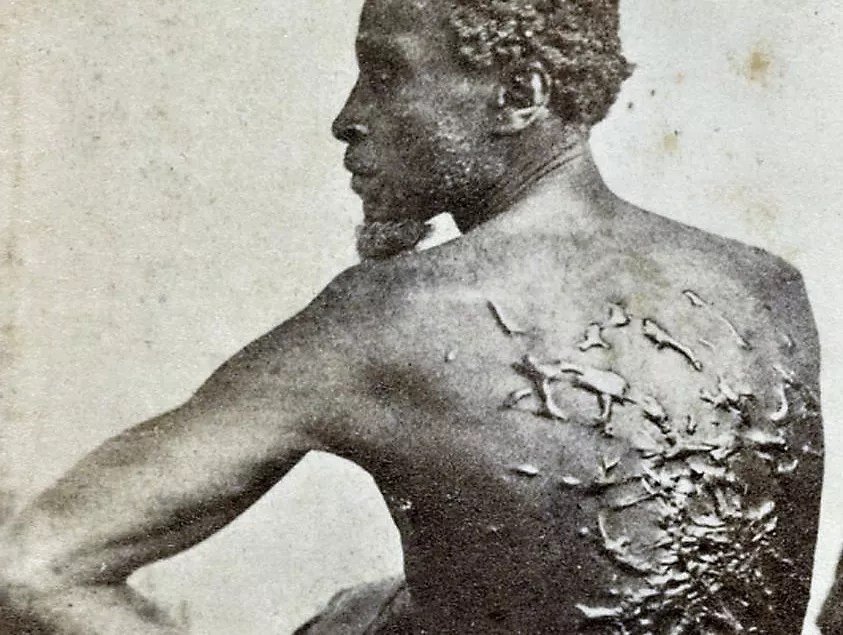
Mark Arthur

Audio By Carbonatix
City staff is recommending that the city not remove the Confederate memorial next to City Hall, leave it in place instead and ameliorate its effect on the public by placing a plaque nearby with “contextual information.”
At Wednesday’s City Council briefing on the issue, it looked as if a majority of the council will vote to reject this advice and take the monument down when it comes to a formal vote next month. But the mayor and council member Sandy Greyson are leading a charge to keep it up, with a plaque.
I have one request. If it stays up and they put a plaque out there to provide “context,” can I write the plaque? I’m serious. One of my first jobs out of college was writing history plaques.
And if we leave that sucker up there, we’re going to need one hell of a plaque. Probably I could think of lots better qualified authors for it – Cynthia Mulcahy, Lauren Woods, Michael Phillips, to name but a few – but in case nobody else wants the job, I offer myself just to make sure it gets done.
Texas was born not in some heroic battle for liberty but, quite the opposite, because white people in Texas wanted a way to preserve slavery after Mexico abolished it by decree in 1829.
Somewhere near the top, my plaque will get across the important historical point that Texas was born not in some heroic battle for liberty but, quite the opposite, because white people in Texas wanted a way to preserve slavery after Mexico abolished it by decree in 1829. Texas was born not merely in slavery but for slavery.
We also need to talk about treason and treachery. My plaque will point out that in the years before the Civil War and even during the war, Texas was a mecca for slave-owners from the Old South, who drove their slaves here from Dixie on long, cruel marches. Their faith was that when the South lost the war – an outcome they expected – Texas would revert to its original status as an independent slave-nation. So while the Texas slaveholders shared their Southern brothers’ and sisters’ disloyalty to the United States, the Texans’ loyalty to their Confederate brothers and sisters wasn’t much to brag about, either.
My plaque will include some first-person testimony from the Slave Narratives – oral history accounts of slavery recorded from interviews with the last living slaves during the 1930s. The chroniclers who gathered these narratives were mostly white and went to great lengths to make a phonetic record of what the black former slaves told them. Therefore, the chronicles have an embarrassing kind of Uncle Remus ring to the modern ear, but I’m sure the people who read my plaque will be able to work through that and hear the inner truth.
There will be a great deal in my plaque about the memories of the former slaves regarding whipping. Descriptions of whippings are incredibly consistent. Former slave James Cape recalled:
“Old Debbil Hill, he used to whup me and the other niggers if we don’t jump quick enough when he holler and he stake us out like you stake out a hide and whup till we bleed. Many the time I set down and made a eight-plait whup, so he could whup from the heels to the back of the head ’til he figger he get the proper ret’ibution. Sometime he take salt and rub on the nigger so he smart and burn proper and suffer mis’ry.”
Cato Carter, who had been a slave in Alabama, was 100 years old when he was interviewed as a free man at his home in Dallas:
“I used to tend the nurslin’ thread. The reason they called it that was when the mammies was confined with babies havin’ to suck, they had to spin. I’d take them the thread and bring it back to the house when it was spinned. If they didn’t spin seven or eight cuts a day, they’d git a whuppin’. It was consid’ble hard on a woman when she had a frettin’ baby. But every mornin’ them babies had to be took to the big house, so the white folks could see if they’s dressed right. They was money tied up in li’l nigger young’uns.
“They whupped the women and they whupped the mens. I used to work some in the tan’ry and we made the whips. They’d tie them down to a stob, and give ’em the whuppin’. Some niggers, it taken four men to whup ’em, but they got it. The nigger driver was meaner than the white folks. They’d better not leave a blade of grass in the rows. I seed ’em beat a nigger half a day to make him ‘fess up to stealin’ a sheep or a shoat. Or they’d whup ’em for runnin’ away, but not so hard if they come back of their own ‘cordance when they got hungry and sick in the swamps. But when they had to run ’em down with the nigger dogs, they’d git in bad trouble.
“The Carters never did have any real ‘corrigible niggers, but I heard of ’em plenty on other places. When they was real ‘corrigible, the white folks said they was like mad dogs and didn’t mind to kill them so much as killin’ a sheep. They’d take ’em to the graveyard and shoot ’em down and bury ’em face downward, with their shoes on.
“They used to cry the niggers off jus’ like so much cattle, and we didn’t think no diff’rent of it. I seed them put them on the block and brag on them somethin’ big. Everybody liked to hear them cry off niggers. The cryer was a clown and made funny talk and kep’ everybody laughin’.
“Near the close of the war I seed some folks leavin’ for Texas. They said if the Fed’rals won the war they’d have to live in Texas to keep slaves. So plenty started driftin’ their slaves to the west. They’d pass with the womens ridin’ in the wagons and the mens on foot. Some took slaves to Texas after the Fed’rals done ‘creed the breakin’ up.”

Photographers working with famed Civil War photographer Mathew Brady recorded this emblematic image of whipping scars.
William D. McPherson and his partner Mr. Oliver, New Orleans/Wikipedia
The smartest, most comprehensive discussion of whipping that I have ever come across is in the journal called “12 Years a Slave, A Narrative of Solomon Northrup, a Citizen of New York.” Northrup, an educated free man, was illegally shanghaied into slavery for 12 years. In his journal of those years, published in 1853, he explains both the economic importance and the fundamental depravity of whipping.
Slaves worked hard, Northrup said, because they were driven up and down the cotton rows by the never-ceasing sting of the overseer’s whip from on horseback. A new slave was “whipped in” on the first day to see how much cotton he or she could pick under extreme duress. That weight of cotton became the slave’s personal daily quota.
A slave whose harvest weighed in at less than his or her daily quota was tied to the ground at the end of the day and given a punishment whipping. A slave whose bag of cotton weighed more than the quota was given a new higher quota.
Solomon also captured the corrosive soul-twisting effect on the slave-owners of whipping human beings as a full-time occupation:
“When ‘in his cups,’ Master Epps was a roistering, blustering noisy fellow whose chief delight was dancing with his ‘niggers,’ or lashing them about the yard with his long whip, just for the pleasure of hearing them screech and scream, as the great welts were planted on their backs. When sober, he was silent, reserved and cunning, not beating us indiscriminately, as in his drunken moments, but sending the end of his rawhide to some tender spot of a lagging slave, with a sly dexterity peculiar to himself.”
This was not Nothrup’s only description of drunken slave-owners who engaged in torture and degradation of human beings as a form of amusement. Indeed, many of the early white abolitionists – the Grimke sisters of Charleston, South Carolina, for example, who were daughters of wealthy slave-owners – opposed slavery primarily because of the depravity they saw slavery wreaking on their white relatives and friends. That needs to be on the plaque, too.
“When sober, he was silent, reserved and cunning, not beating us indiscriminately, as in his drunken moments, but sending the end of his rawhide to some tender spot of a lagging slave, with a sly dexterity peculiar to himself.” — Solomon Northrup
I want my plaque to wind up at Abu Ghraib, the Baghdad Central Prison where American soldiers took photos of themselves in 2006 torturing Iraqi prisoners. It will also discuss Nazi Germany, where German gentiles humiliated German Jews in the streets before the Jews were shipped off for extermination. The point would be that the behavior Solomon Northrup observed during American slavery – the slave-master “dancing” with his slaves at the end of a whip, for example – is uncannily consistent, almost irresistible, it would seem, when one group of human beings denies the humanity of another and takes ownership of the other as chattel.
One of two main points I would want my plaque to make at the end is that slavery had the same profound morally and spiritually corrupting effect on white Texas that Nazi death camps had on gentile Germany. The second of those points would be this: The decision to leave standing this monument to depravity is a standing proof, more than a century and a half after emancipation, that we have learned little. We could only stand to see this horrific monument standing so near our City Hall if the depravity of slavery still dwelled somewhere in our souls.
If I am allowed to write this plaque, I will charge nothing for my services. Not one penny. Consider it a little gift from me to the city.
But on the flip side, if anybody thinks they’re going to get away with some kind of obfuscating, euphemizing, relativizing, anodyne, chicken-hearted plaque that fails to tell the full truth, they need to think again. If that even looks like it might happen, tighten your seatbelts because then it’s time to call in the professionals.
Or we could just take it down.